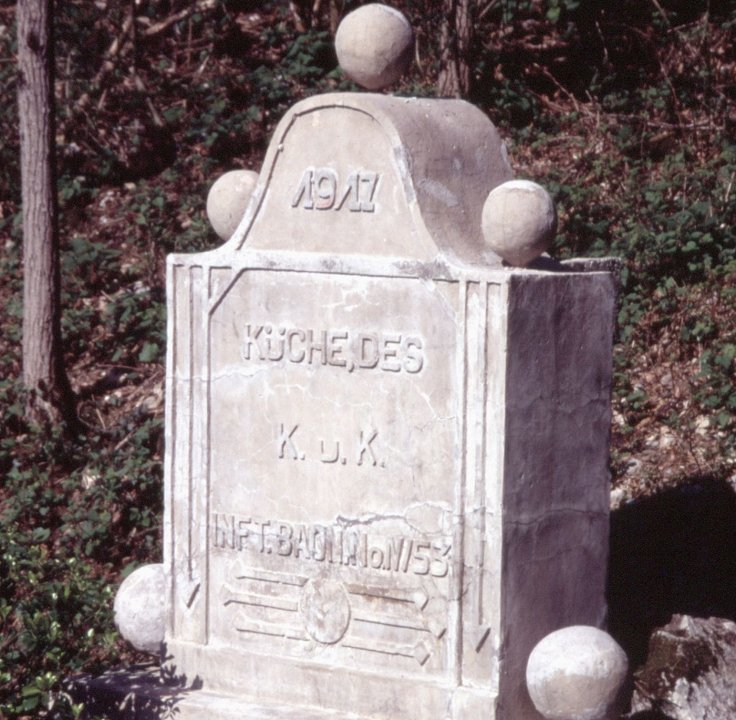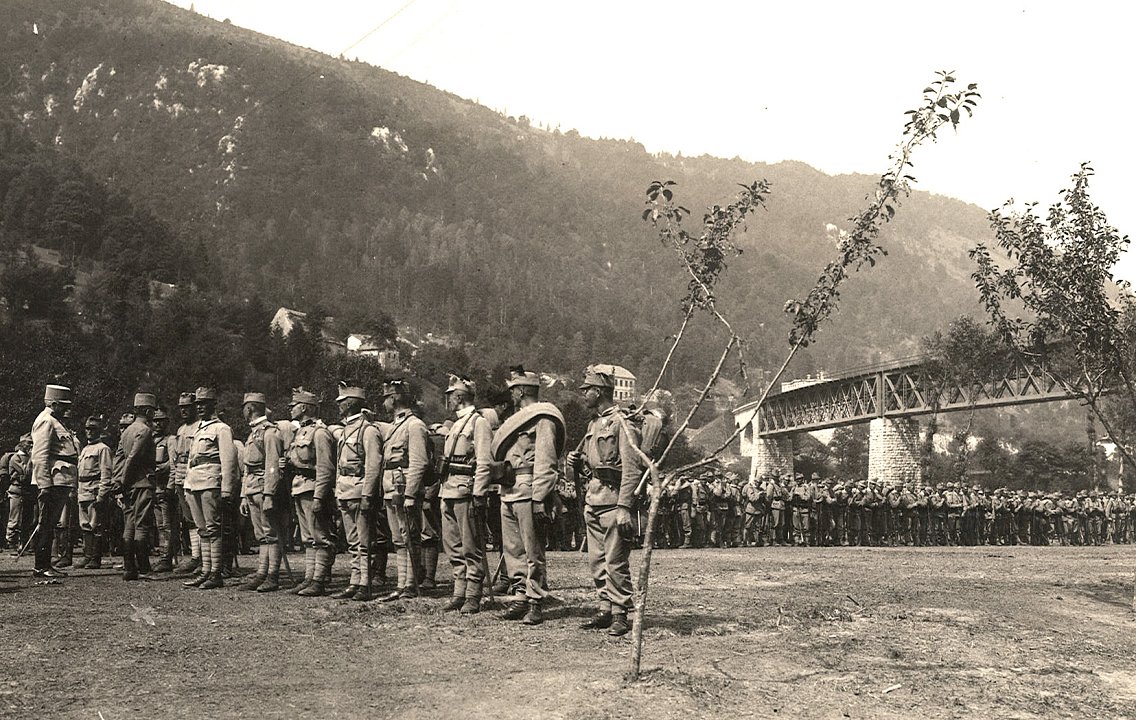August 1917. Your name is Samir. You are a Bosnian of the Islamic religion, born in Zenica. At the age of twenty-five you were drafted to the Austro-Hungarian army, and in 1915 deported to where the Battles of the Insonzo took place, namely to a base in Modrejce. You have been here now for over two years. You are an assistant in the field battalion kitchen set up at St. Lucy’s (today's Most na Soči) right at the foot of the Cvetje hill. Riding the mules, you deliver food to the soldiers in the field at night. You lost some of the men and pack animals during yesterday's raid. Food supplies are ebbing. Today you prepare oats with beans, and for tomorrow, you are going to prepare bosanski lonec (Bosnian stew).
In the rear of the Battles of the Insonzo
In the rear of the Battles of the Insonzo
Can you guess how many people were required in the rear of the battle to supply one soldier on the front line?
Each soldier in the front line required at least four to five people in the rear of the Battles of the Insonzo. They supplied the soldiers on the battle field and worked as carriers.
Field kitchen
Near the village, the field kitchen also operated. On the slopes, approximately 150 m from the bridge across the Soča River and above the road towards Nova Gorica, lies one of the most peculiar reminders of the Battles of the Insonzo, a memorial to the field kitchen.
Are you familiar with the recipe for the Bosnian stew (bosanski lonec)?
It is prepared by layering large chunks of meat (beef or lamb), potatoes, and vegetables into a clay pot. Then add pepper, sweet bay, bell pepper, tomato juice and chopped tomatoes. Finally, add salt, wine and as much water as necessary to cover all the ingredients. Cover the pot, bring it to the boil on the stove and then place it into the oven where it should slowly cook for two to three hours. Do not open the pot while cooking.




